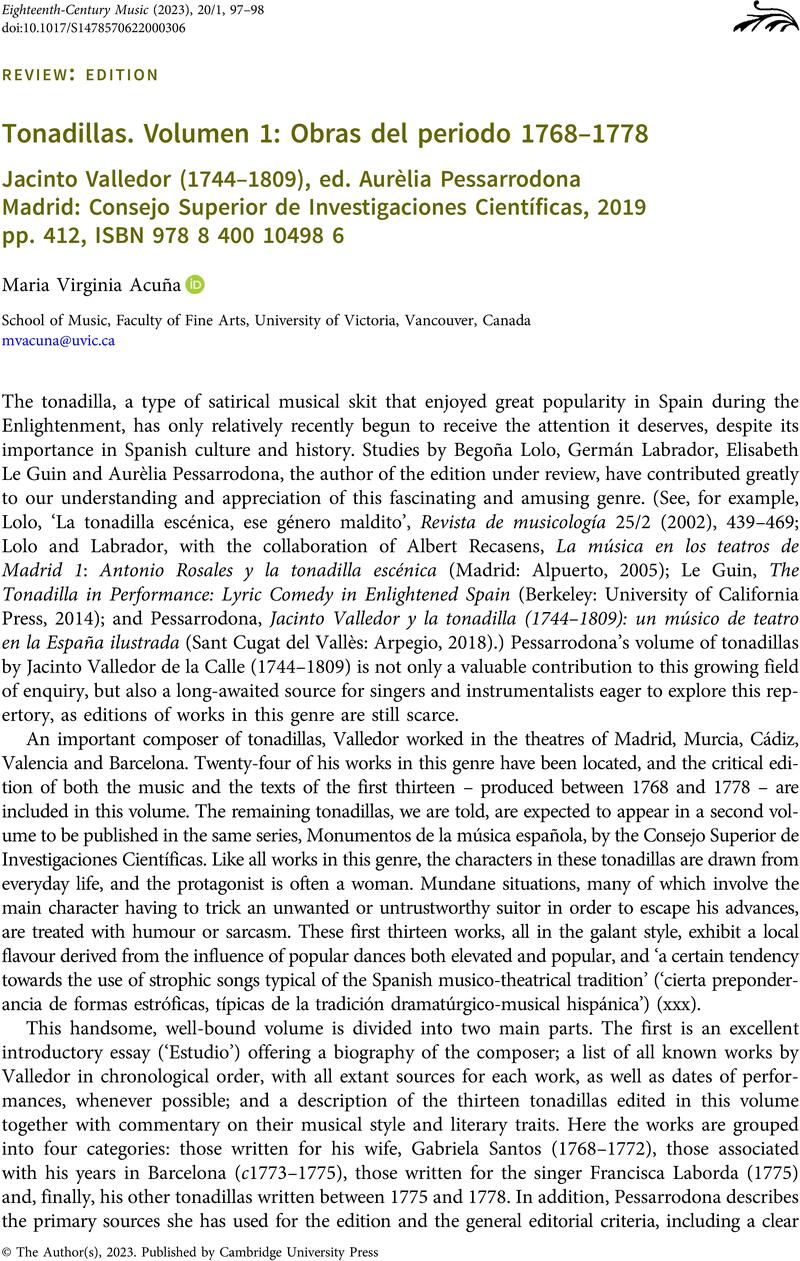No CrossRef data available.
Article contents
Tonadillas. Volumen 1: Obras del periodo 1768–1778 Jacinto Valledor (1744–1809), ed. Aurèlia Pessarrodona Madrid: Consejo Superior de Investigaciones Científicas, 2019 pp. 412, ISBN 978 8 400 10498 6
Review products
Tonadillas. Volumen 1: Obras del periodo 1768–1778 Jacinto Valledor (1744–1809), ed. Aurèlia Pessarrodona Madrid: Consejo Superior de Investigaciones Científicas, 2019 pp. 412, ISBN 978 8 400 10498 6
Published online by Cambridge University Press: 08 February 2023
Abstract
An abstract is not available for this content so a preview has been provided. Please use the Get access link above for information on how to access this content.

- Type
- Review: Edition
- Information
- Copyright
- Copyright © The Author(s), 2023. Published by Cambridge University Press



